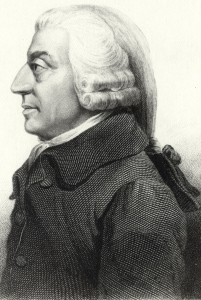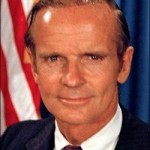In their focused efforts to revoke regulations, conservative zealots in the media and Congress have expanded their argument to elevate free markets into near-divine status.
But in the process, free market proponents have consistently avoided any discussions about how government intervention and its largesse provide essential funding and profits to major economic sectors and significant profits to individual corporations. They also have failed to address collusion among corporations, which seek to profit by violating the free-market principles the zealots trumpet. Without this federal intervention, entire industries would not exist or would be entirely unrecognizable.
To make their case, the zealots have developed their purist free market doctrine, while conveniently avoiding essential facts. And as formally trained economists agree, any good economic theory has to include essential data and observable facts that coincide with reality.

Free market zealots cite Adam Smith and his themes of self-interest, anti-government, and anti-regulation. But in the U.S., high tariffs were imposed to protect home markets, which allowed small businesses to compete against foreign-made goods. While reality differed from Smith’s model, his ideas remained robust enough to best explain the U.S.’ tremendous economic growth over established economies in Britain, Germany and France at the turn of the twentieth century.
But that is history. Today, there are thousands of examples of the free market myth, but just to appreciate the scope of this canard, here are a few glaring examples about events the zealots conveniently fail to address:
Pharmaceuticals
To keep cheaper generic versions of drugs off the market, some pharmaceutical companies have paid rival firms a fee to keep their general version out of the marketplace. The practice, called “pay for delay,” allows the brand name patented drug a longer lifespan, but this also costs consumers an estimated $3.5 billion in higher drug prices. The practice has been going on for years, but it literally took a Supreme Court decision, passed down in June 2013, to allow the government to sue drug companies for anti-trust in the “pay for delay” game. The bad news is that anti-trust suits are extremely rare and take years to develop, if they ever come to fruition. In the interim, customers pay more money even though a cheaper version is available. )Source: “A Faster Track for Generic Drugs,” Carole Fleck, AARP Bulletin, September 2013.)
Farming
Federal farm subsidies have cost taxpayers $256 billion in commodity subsidies, crop insurance, and disaster programs and $39 billion in conservation payments paid between 1995 and 2012.
“Unlimited crop insurance subsidies now cost the taxpayer $9 billion a year and overwhelmingly flow to the largest and most successful farm businesses. Unlike other farm subsidies, crop insurance subsidies are not subject to means testing or payment limits and farmers are not required to adopt basic environmental protections in exchange for premium support from the taxpayer. While some farms annually collect more than $1 million in crop insurance premium support, the bottom 80% of policyholders annually collects about $5,000.” Source: Environmental Working Group
Defense Contracting
This industry provides the best examples with the largest price tags to taxpayers. Take the case of Lockheed-Martin, the company which essentially started America’s military-industrial complex. Today, Lockheed Martin, the nation’s largest military contractor, is intertwined into the Pentagon and receives over $25 billion annually in contracts. The company has also prospered from cost over runs and bribery, and still managed to become the first company in U.S. history in 1971, to receive a $250 million bailout in the form of a federal loan guarantee, despite its gross mismanagement. Today, Lockheed Martin is the world’s largest defense contractor and private intelligence operation.
The story of this company is so blatantly anti-free market that it should serve as the poster boy example of collusion. Take the case of the the C-5A project that became riddled with an estimated $2 billion in cost overruns by 1964. The Air Force knew about the overruns, but told Congress the plane was on budget. The Air Force even fired one of its own cost analysts who testified about the waste. By 1970, GAO reports emerged that the plane had 25 significant technical problems in its wings, avionics, and landing gear, which prevented it from completing its assigned mission, but the Air Force was accepting the planes anyway.
It soon became clear the Air Force favored Lockheed, and when the company suffered financially, the Air Force essentially bailed them out by ordering 57 more C-5As, which would cost 240% more than the original projected cost of the first batch of planes. Even worse, only four planes from the first batch of 54 were completed, yet the Air Force secretly pushed ahead with a new, second order for 57 more planes. By 1977, serious problems with the plane’s wings and cargo door prompted new fears, but by 1980 no repairs were made. Worse, the Air Force slanted the most expensive remedies about correcting the problems, so that Lockheed would be assured of getting the contract. When the Air Force needed more transport planes, it again pushed for Lockheed’s C-5B model and then invited the company to write the Defense Secretary’s brief endorsing their own plane.

A subsequent investigation by Senator William Proxmire said the C-5A was built in a federally-owned plant, using government-owned machinery and with government payments covering up to 90% of the actual costs. It was later found that Lockheed was taking money from the C-5A cost overruns to prop-up its ailing passenger plan, the L-1011 Tristar airliner, which according to the Pentagon, was estimated to lose $700 million or more in 1970. Lockheed had also negotiated a very favorable rent in a federally-owned plant to build the passenger plane. (Source: Prophets of War, by William Hartung, 2011.)
What Free Market?
While these are just a few examples of anti-free market practices, they are all pre-dated by the railroad industry Robber Barons, who at the turn of the century mutually agree that competition was wasteful and anti-productive. As a result, the divided up the country into railroad kingdoms. This same division has applied to almost every major U.S. industry, but it does not provide an admirable cover story, so it has been deleted from the free marketer’s song.
However, the 2008 TARP bailout program shows that federal intervention is alive and well, especially among the nation’s largest corporations. This is why the former head of Merrill Lynch from 1996 to 2002, David Komnansky, said he “doesn’t have the same distaste for government intervention” now as he did before the TARP program in 2008. Merrill Lynch was bailed out to the tune of $25 billion in taxpayer money in October 2008.
Nor is Komansky alone. Federally funded contracts help bolster the paychecks of the nation’s top CEOs. As noted by the Institute for Policy Studies: “CEOs whose companies rank among the nation’s top 100 recipients of federal government contracts comprise more than 12 percent of the top-paid chief executives on our 20 annual lists. In the same years that these CEOs pocketed some of corporate America’s fattest paychecks, their firms snagged $255 billion in taxpayer-funded federal contracts.”
So not only does the free market myth fail to explain corporate bailouts and subsidies, it also helps explain the widening wealth gap between the top 1% and the rest of Americans.











